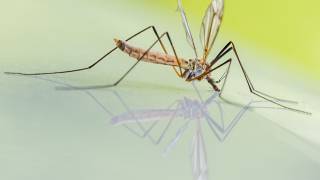Eliminate and Prevent Zika with Natural Compound

Health officials and pharma companies are currently focused on traditional Zika prevention strategies, such as developing new vaccines and eliminating infected mosquitoes.
But, there is a current need for a therapeutic treatment for people who are already infected with the Zika virus.
Researchers from Weill Cornell Medicine and Memorial Sloan Kettering Cancer Center, believe a compound used in traditional Chinese medicine to lower blood pressure, may be the first to combat Zika in infected people.
Specifically, this study reported:
- Hippeastrine hydrobromide eliminates virus from human pluripotent stem cell-derived cortical neural progenitor cells infected with Zika
- Hippeastrine hydrobromide inhibits Zika infection in fetal-like forebrain organoids
- Hippeastrine hydrobromide suppresses Zika in mice carrying infectious virus
These scientists screened more than 1,000 U.S. Food and Drug Administration (FDA) approved drugs and traditional medicines for their ability to block Zika virus infection in human fetal brain cells.
The screening process revealed the anti-Zika activity of Hippeastrine Hydrobromide, which is an active ingredient of the medicinal plant Lycoris radiata, known as Red Spider Lily. Hippeastrine Hydrobromide performed the best at protecting the neural progenitor cells from the virus
“We think it could be the first to be useful in treating Zika-infected patients, rather than just preventing infection,” said study co-senior author Dr. Shuibing Chen, an associate professor of chemical biology in surgery and of biochemistry at Weill Cornell Medicine.
The Zika virus is particularly damaging to the developing brain of fetuses, where its growth-slowing, cell-killing effects can lead to microcephaly, a severe birth defect in which the brain fails to develop to normal size.
Co-senior author of this study, Dr. Lorenz Studer, director of the Center for Stem Cell Biology at the Sloan-Kettering Institute for Cancer Research, used human embryonic stem cells to generate immature brain cells known as neural progenitors. These are common in the fetal brain and are particularly vulnerable to Zika infection.
Of the 1,120 compounds screened in this study, Hippeastrine Hydrobromide performed best at protecting the neural progenitor cells from the virus.
Even when the cells were already infected by Zika, a modest dose of Hippeastrine Hydrobromide eliminated all molecular evidence of the virus within three days, without harming the cells.
The Hippeastrine Hydrobromide treatment allowed the cells to proliferate and mature normally.
In another experiment in this study, “Hippeastrine Hydrobromide eliminated Zika infection in large clusters of fetal brain cells, and also reduced signs of Zika infection in the brains of adult mice,” said study co-author Dr. Todd Evans, associate dean for research, the Peter I. Pressman, M.D. Professor in Surgery, and a professor of cell and developmental biology in surgery at Weill Cornell Medicine.
These researchers believe their approach highlights the power of stem cell-based screens and validation in human forebrain organoids and mouse models in identifying drug candidates for treating ZIKV infection and related neurological complications in fetal and adult patients.
This study was supported by NIH grants including DP2 DK098093-01 and DP3DK111907-01, as well as by NYSTEM.
No conflicts of interest were reported by these researchers.
Our Trust Standards: Medical Advisory Committee

























